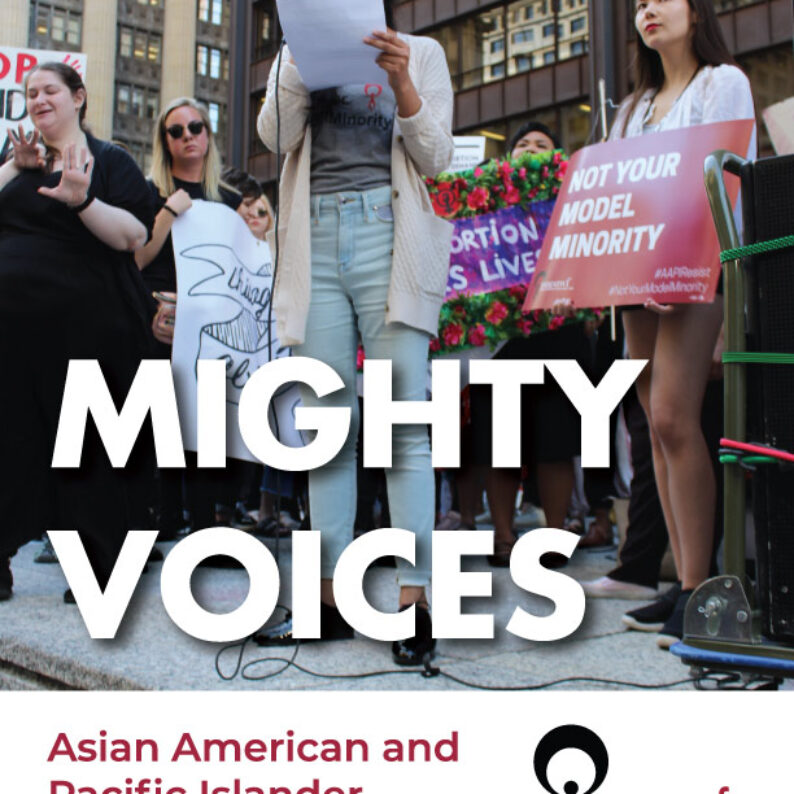Mighty Voices: AAPI Women Voters in 2020

The 2018 midterm elections provided more evidence of an emerging trend line: Asian American and Pacific Islander (AAPI) voters have moved to the left on the political spectrum. In many areas of the country, we have become a significant force in support of progressive candidates. This evolution, taken in combination with the demographic reality that AAPIs are the fastest growing racial group in the U.S. and forecasts predicting that the population of AAPI voters will double from 5.9 million in 2015 to 12.2 million in 2040, led some to refer to this rapidly expanding population as a “sleeping political giant.”
While AAPI communities do hold a powerful and untapped potential to be a force for progressive change, the metaphor of the sleeping giant is flawed. As an organization with deep relationships in AAPI communities throughout the U.S., NAPAWF has the evidence and experience to proclaim that AAPI communities are not asleep. This issue brief, Mighty Voices: Asian American and Pacific Islander Women Voters in 2020, describes NAPAWF’s learnings from public opinion research and voter outreach efforts and demonstrates that AAPI women voters are awake, aware, and activated. The misconception that this giant is sleeping fails to take into account the realities revealed by engaging with, and listening to, these voters.
In fact, the failure of the U.S. political establishment to notice and engage with AAPI voters is a self-perpetuating problem. Ignored by, and invisible to, political leadership across the ideological spectrum, AAPI communities have too often been denied the investment and resources necessary to convert the strongly held, values-driven concerns that AAPI voters express into the fully actualized political force for change we have the potential to wield. In 2020, when a woman of South Asian descent is on the presidential ballot for the first time in U.S. history, it would be a monumental mistake to continue leaving these voters on the sidelines of the electoral battle.
Mighty Voices recounts the experiences, opinions, and intentions NAPAWF has heard from AAPI women voters in our communities. It relates the stories and concerns of the mobilized voters who talked with our researchers and organizers. It presents the priorities that AAPI women voters articulate when discussing how our electoral decisions are motivated by values. It describes what AAPI women want and expect from candidates for office – people who will be our partners in working toward the goal of manifesting our vision. And it offers concrete recommendations for political leaders with the ambition, foresight, and commitment to do what it will take to realize the power of AAPI women voters.